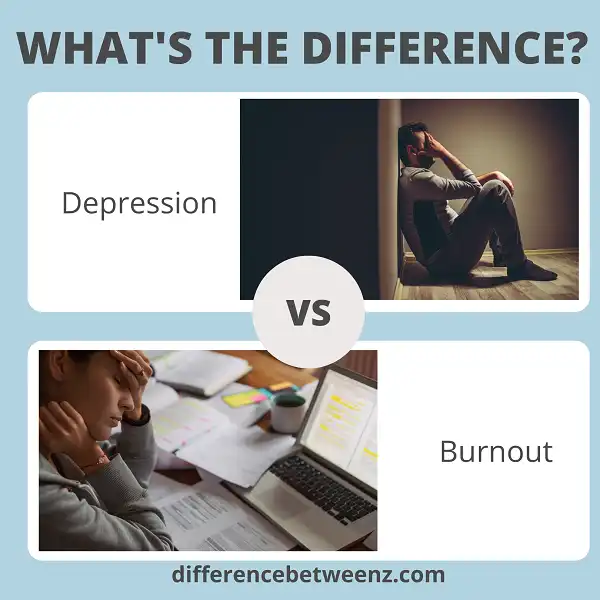Are you feeling down and unmotivated? Are you struggling to get through the day-to-day tasks? You may be experiencing depression. But, what if your problems go beyond depression? What if you feel exhausted and incompetent, like you can’t do anything right? You may be experiencing burnout. Though there are similarities between depression and burnout, they are two distinct conditions with unique symptoms. In this post, we will explore the difference between depression and burnout, including diagnostics and treatment options. Read on to learn more!
What is Depression?
- Depression is characterized by a persistent feeling of sadness or loss of interest, as well as by a range of physical and psychological symptoms. Depression can lead to a number of emotional and physical problems and can decrease a person’s ability to function at work and home. Depression is different from normal sadness in that it interferes with daily life and causes significant distress.
- People with depression may have trouble sleeping, concentrating, and remembering things. They may also feel tired, irritable, or anxious. Depression is one of the most common mental disorders, affecting millions of people around the world. It is important to seek professional help if you are experiencing symptoms of depression. Depression is treatable, and many people who receive treatment for depression feel better.
What is Burnout?
- Burnout is a state of physical, emotional, and mental exhaustion caused by prolonged or excessive stress. It can result from both personal and professional stressors, and it is often characterized by feelings of cynicism, detachment, and a sense of ineffectiveness. Burnout can have serious negative consequences for both individuals and organizations.
- It can lead to decreased productivity, absenteeism, and job dissatisfaction, and it can even contribute to physical health problems such as heart disease and ulcers. Burnout is preventable, however, and there are steps that both individuals and organizations can take to reduce the risk of burnout. These include developing realistic expectations, encouraging work-life balance, and providing support systems for employees. By taking these steps, we can help prevent burnout before it starts.
Difference between Depression and Burnout
- Depression is a mental illness that is characterized by persistent feelings of sadness and low energy. Depression can make it difficult to concentrate, eat, sleep, and enjoy activities that used to bring happiness. Depression can also lead to physical health problems such as headaches and chest pain. Burnout, on the other hand, is a state of physical, emotional, and mental exhaustion caused by excessive and prolonged stress.
- People who are burned out may feel exhausted, irritable, and unable to concentrate. They may also have difficulty sleeping and may find that their appetite has decreased. While both depression and burnout can be caused by stress, there are some key differences between the two conditions. Depression is a more serious condition that can last for weeks or months, while burnout is usually less severe and may only last for a few days or weeks.
- Depression is also characterized by feelings of hopelessness and helplessness, while people who are burned out may still feel hopeful and motivated. Finally, depression can lead to suicidal thoughts or behaviors, while burnout does not typically have these same risks. If you think you may be experiencing depression or burnout, it is important to talk to a doctor or mental health professional for help.
Conclusion
The line between burnout and depression can be blurry, but it is important to understand the difference. Burnout is usually a response to chronic stress and occurs when someone feels overwhelmed and unable to meet their responsibilities. Depression, on the other hand, is a mental illness that causes feelings of sadness, worthlessness, and hopelessness that can last for weeks or months at a time. If you are experiencing any of the symptoms of either condition, it is important to seek professional help. Although both conditions can be treated with medication and therapy, early diagnosis and intervention are key in preventing long-term damage.


